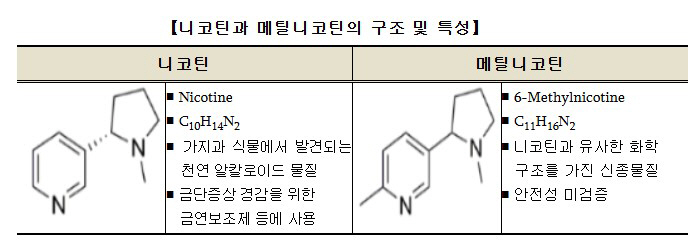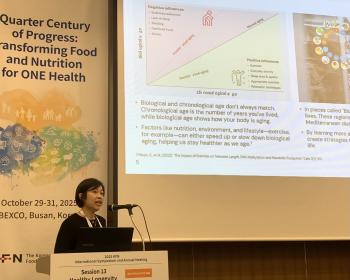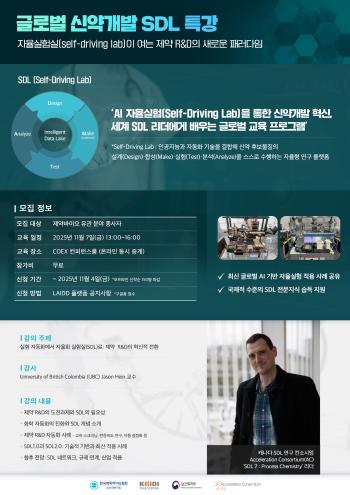Disposable liquid electronic cigarettes detect similar nicotine that has not been verified for safety
Mar 26, 2025
Pseudo-nicotine whose safety has not been verified was detected in one of the disposable liquid e-cigarettes recently sold in online and convenience stores, and nicotine was detected in many products marked 'municotin'.
This is the result of a survey by the Korea Consumer Agency on nicotine and similar nicotine content and labeling of 15 disposable liquid e-cigarette products sold online.
According to the Korea Consumer Agency, 13 mg of methylnicotin, a similar nicotine, was detected in 1 out of 15 products surveyed, and nicotine was also contained 120 mg despite no nicotine indication. This was similar to 240 cigarettes with a nicotine content of 0.5 mg.
Methylnicotin, a novel substance with a chemical structure similar to nicotine, has no clear safety data for acute poisoning and nerve stimulation. It has been reported that a small amount has the same effect as nicotine and is more cytotoxic than nicotine, which can pose a potential risk to human health. In addition, there was no indication of the content, content, and precautions of nicotine and similar nicotine on the product and online sales page, so consumers could mistake it for a mucicotin product.
Of the 15 products surveyed, 12 were marked as mucicotin, and two products had no indication of nicotine content. One product displayed a nicotine content of less than 1%. If liquid e-cigarettes contain more than 1% (10 mg/mL) of nicotine, they can be classified as toxic substances under the Chemical Substances Management Act and treated only as licensed substances, but if they are less than 1%, there are no separate regulations.
As a result of the survey, nicotine was detected from a minimum of 82 mg to a maximum of 164 mg in 10 products (66.7%) out of 15 surveyed. Seven of the 12 Municotin-labeled products and two non-Nitrogen-labeled products were found to contain 82 to 158 mg of nicotine, and one product showing nicotine content had less nicotine content than indicated.
If all products with the highest nicotine (164 mg per unit) are used, they correspond to nicotine levels similar to 327 cigarettes with a nicotine content of 0.5 mg. According to the toxic information provision system of the Ministry of Food and Drug Safety, nicotine can cause increased heart rate, increased blood pressure, and nerve stimulation, and can lead to death from respiratory failure in case of acute poisoning caused by high doses.
On the other hand, as a result of checking the 'Youth Hazard Marking' of the 15 products surveyed, 14 products had no or insufficient related marks. Electronic cigarette device devices that can inhale e-cigarette liquids and tobacco components, such as tobacco-type inhalants and nicotine solutions, fall under 'adolescent harmful items' and cannot be sold, lent, or distributed to juveniles.
In this regard, the Consumer Agency said "Municotin-labeled products may be confused with non-medical products that are inhaled in a form similar to cigarettes to improve smoking habits, so consumers need to be careful."
Based on the results of the survey, the Korea Consumer Agency recommended that businesses that sell products with nicotine or similar nicotine detection be stopped, and recommended that businesses that sell products with insufficient 'juvenile harmful labeling' improve their labeling. In addition, consumers were urged to be careful about using disposable liquid e-cigarettes and to check the labeling of non-drugs when purchasing smoking habit improvement supplements for smoking cessation.
This is the result of a survey by the Korea Consumer Agency on nicotine and similar nicotine content and labeling of 15 disposable liquid e-cigarette products sold online.
According to the Korea Consumer Agency, 13 mg of methylnicotin, a similar nicotine, was detected in 1 out of 15 products surveyed, and nicotine was also contained 120 mg despite no nicotine indication. This was similar to 240 cigarettes with a nicotine content of 0.5 mg.
|
Of the 15 products surveyed, 12 were marked as mucicotin, and two products had no indication of nicotine content. One product displayed a nicotine content of less than 1%. If liquid e-cigarettes contain more than 1% (10 mg/mL) of nicotine, they can be classified as toxic substances under the Chemical Substances Management Act and treated only as licensed substances, but if they are less than 1%, there are no separate regulations.
As a result of the survey, nicotine was detected from a minimum of 82 mg to a maximum of 164 mg in 10 products (66.7%) out of 15 surveyed. Seven of the 12 Municotin-labeled products and two non-Nitrogen-labeled products were found to contain 82 to 158 mg of nicotine, and one product showing nicotine content had less nicotine content than indicated.
If all products with the highest nicotine (164 mg per unit) are used, they correspond to nicotine levels similar to 327 cigarettes with a nicotine content of 0.5 mg. According to the toxic information provision system of the Ministry of Food and Drug Safety, nicotine can cause increased heart rate, increased blood pressure, and nerve stimulation, and can lead to death from respiratory failure in case of acute poisoning caused by high doses.
On the other hand, as a result of checking the 'Youth Hazard Marking' of the 15 products surveyed, 14 products had no or insufficient related marks. Electronic cigarette device devices that can inhale e-cigarette liquids and tobacco components, such as tobacco-type inhalants and nicotine solutions, fall under 'adolescent harmful items' and cannot be sold, lent, or distributed to juveniles.
In this regard, the Consumer Agency said "Municotin-labeled products may be confused with non-medical products that are inhaled in a form similar to cigarettes to improve smoking habits, so consumers need to be careful."
Based on the results of the survey, the Korea Consumer Agency recommended that businesses that sell products with nicotine or similar nicotine detection be stopped, and recommended that businesses that sell products with insufficient 'juvenile harmful labeling' improve their labeling. In addition, consumers were urged to be careful about using disposable liquid e-cigarettes and to check the labeling of non-drugs when purchasing smoking habit improvement supplements for smoking cessation.
This article was translated by Naver AI translator.














